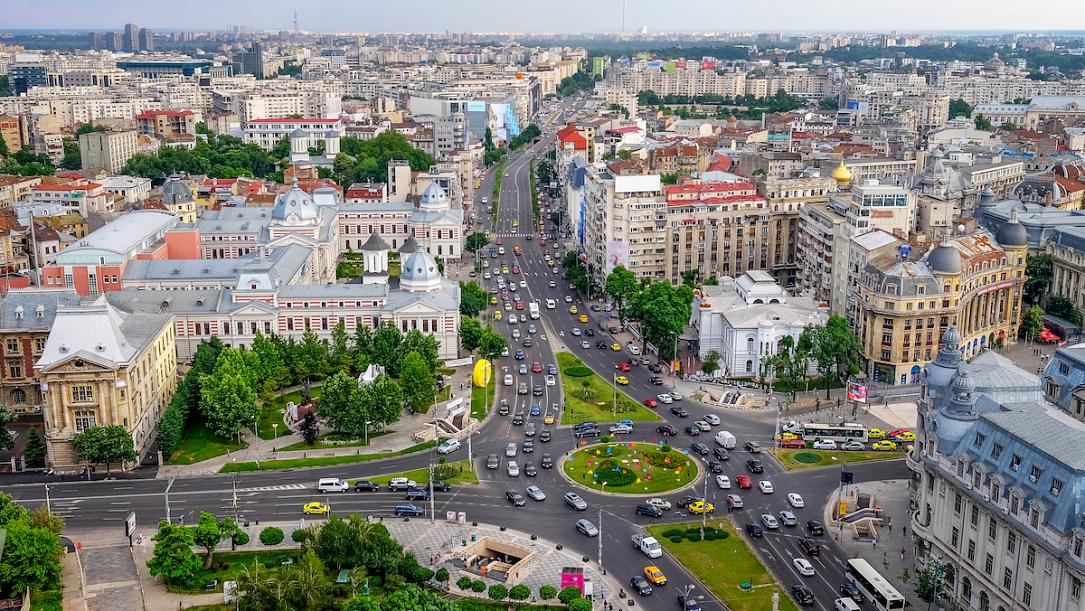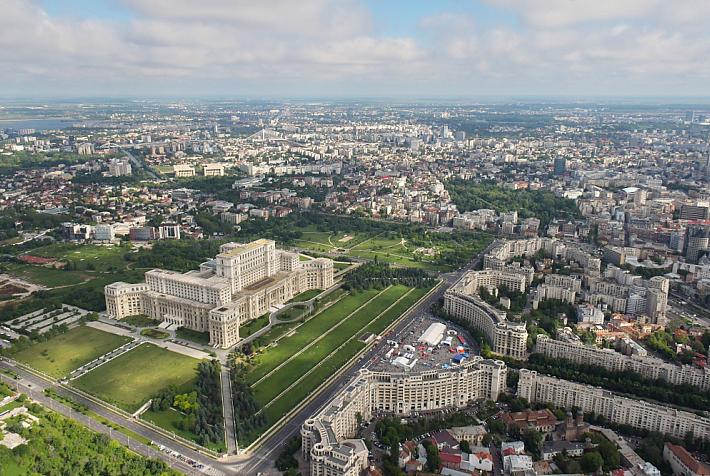Romania travel: Five reasons to visit Bucharest

Bucharest has slowly moved on from its reputation as a city for business to a place more attractive for tourists. Among its architectural landmarks, laid-back cafes, top museums and busy arts&culture life, there is something for everyone.
Discover its eclectic architecture
Bucharest residents like to reference its interwar name of “Little Paris” but the Romanian capital is often described as a city of contrasts, especially when it comes to its architecture. Those who will set about to explore it will find a wealth of Art Deco buildings and neoclassical palaces, beautiful examples of religious architecture and medieval sites, and many Soviet-style dormitory neighborhoods.
In recent years, the Palace of Parliament (pictured above) has turned into a symbol of the city and one of its most visited sites. It stands testimony to the ambition of later dictator Nicolae Ceaușescu, and is the largest project undertaken in the Romanian capital in the past 100 years. It is considered the heaviest building in the world. More importantly for the capital, it changed its face forever as the older, picturesque neighborhood Uranus was almost entirely demolished to make room for it. Those interested can either visit the palace itself or the wing that hosts the National Museum of Contemporary Art (MNAC).
Not very far away, the city’s Old Town, a bustling site of restaurants, sidewalk cafes and bars, hides narrower streets dotted with older villas, some restored others less so. Not to miss here are Hanul lui Manuc, one of the few inns still standing in Bucharest out of almost 40 which existed two centuries ago, and the Old Court, the oldest medieval monument in Bucharest. Also in the Old Town, Stavropoleos Church is a beautiful example of the local Brâncovenesc style, and its inner yard, an unlikely oasis in a part of town geared towards non-stop entertainment.
For a feel of Bucharest’s Belle Époque years, take a stroll on Dacia Boulevard, to see some of the capital’s finest architecture, or head to Cotroceni neighborhood, one of the city’s most beautiful and green. Here you will also find the Botanical Garden and the Cotroceni Palace, one of the former royal residences and a site to visit for anyone interested in learning more about local history.
Have a good coffee
Bucharest is well covered by international coffee shop chains but also has its share of independent ones, serving excellent coffee in stand-out interior design. One of the best in the Old Town is Origo, which by night turns into a cocktail bar. Near Amzei Square, M60 has a relaxed vibe, while Beans&Dots, in the refurbished, downtown Universul Palace, can also serve as a work venue. Elsewhere, Dianei 4 is another place worth checking, known for its bohemian feel. It is located in a 19th century villa remodeled in the 1920s, and also serves food and a selection of craft beers and fine wines. And, among the socially-minded initiatives in the capital, Sheida Coffee & Stories directs the profits from the coffee shop and the Persian rug showroom above to the Regina Maria social clinics. Also in the Old Town, Carul cu Bere is worth a stop for those looking to try some local dishes and for its architecture. It stands close to the Palace of the Savings Bank CEC, an eclectic style edifice on Calea Victoriei recognizable by glass and metal dome, and the Palace of the National Bank of Romania, one of the capital’s most beautiful buildings.
See how nature claimed its place in the city
Many of the capital’s neighborhoods have large parks, offering a spot for strolls, jogging, cycling or boat riding. Among the capital’s oldest is Cișmigiu Park, close to Universitii Square, an elegant, English-style public garden with alleys dotted with fountains, monuments and statues. Among the city’s largest are Tineretului Park, close to Unirii Square, Titan/ Alexandru Ioan Cuza Park in the eastern part of the city, and Herăstrău, now renamed King Michael I, in the north of the capital. The park stands around Herăstrău Lake, and is filled with spots awaiting to be discovered, like the Japanese Garden, which looks spectacular in spring. The Dimitrie Gusti National Village Museum, an open-air museum focused on traditional rural life, is located nearby. Several restaurants are located inside the park, adding to the options to spend the time there.
One unusual spot is Văcărești Delta, which was declared a nature park a few years back. This area is located only 4 km away from the city center but it is an excellent place for nature fans, who can try birdwatching the more than 130 species of birds found here, in addition to reptiles, and mammals such as otters, foxes or weasels.
Explore top museums and exhibitions
The Village Museum in Bucharest (pictured above) is a must-see for anyone visiting the capital. This open-air museum is one of the biggest such ethnographic museums in the country and encompasses hundreds of authentic peasant farms and houses from all over Romania. To get up to speed with Romanian art, head to the National Museum of Art of Romania (MNAR), which has collections spanning Old and Modern Romanian art, covering icons, embroideries, manuscripts, prints, silverware, jewelry, sculptures, and paintings. For an insight into Romanian art from the 1960s to the present, the recently opened Museum of Recent Art (MARe) has a collection of works as varied as painting, sculpture, installation, photography, collage, conceptual and video art. Those interested in the country’s communist past have the Palace of Parliament to see but also the Primăverii villa, where Ceaușescu and his wife lived.
Catch up with the many cultural events
As expected from a capital city, Bucharest has a busy cultural life, with a variety of events and festivals making up a filled agenda. This year is particularly busy, with the Romania-France Season bringing top exhibitions in town, among them one dedicated to Romanian-born French photographer and cinematographer Eli Lotar and ones covering the art collections of Société Générale and Renault.
This is also a year when Enescu Festival takes place, beginning August 31. Classical music fans will get to see top orchestras and soloists perform in the capital, and the opening of the event will feature a performance from the Berlin Philharmonic, only the second time the orchestra is coming to Bucharest. The festival is also a good opportunity to discover the Romanian Athenaeum (Ateneul Român), a symbol of the national culture and a remarkable work of architecture. The Athenaeum is home to the George Enescu Philharmonic Orchestra and hosts several series of concerts in the festival.
Despite the international success of Romanian films in recent years, Bucharest, as most cities in the country, does not have many venues where these are screened. It is usually the many film festivals going on in town that offer an opportunity to catch up with the Romanian directors’ work. One of them, Les Films de Cannes a Bucarest, screens productions awarded at the French festival where so many Romanian directors got recognized. Among them, this year’s release from director Corneliu Porumboiu La Gomera/ The Whistlers, included in the Cannes official competition.
(Opening photo: Shutterstock)
editor@romania-insider.com















